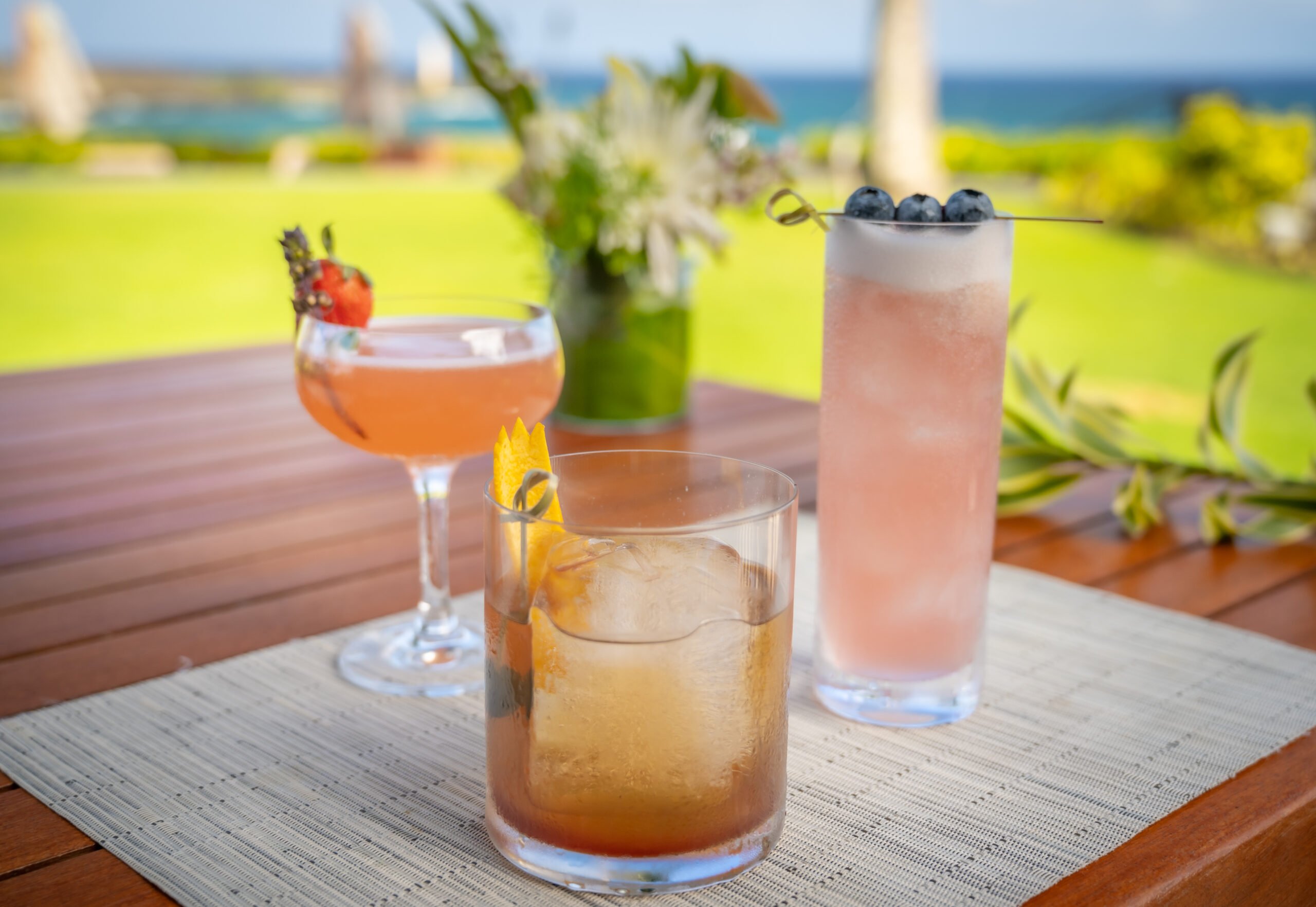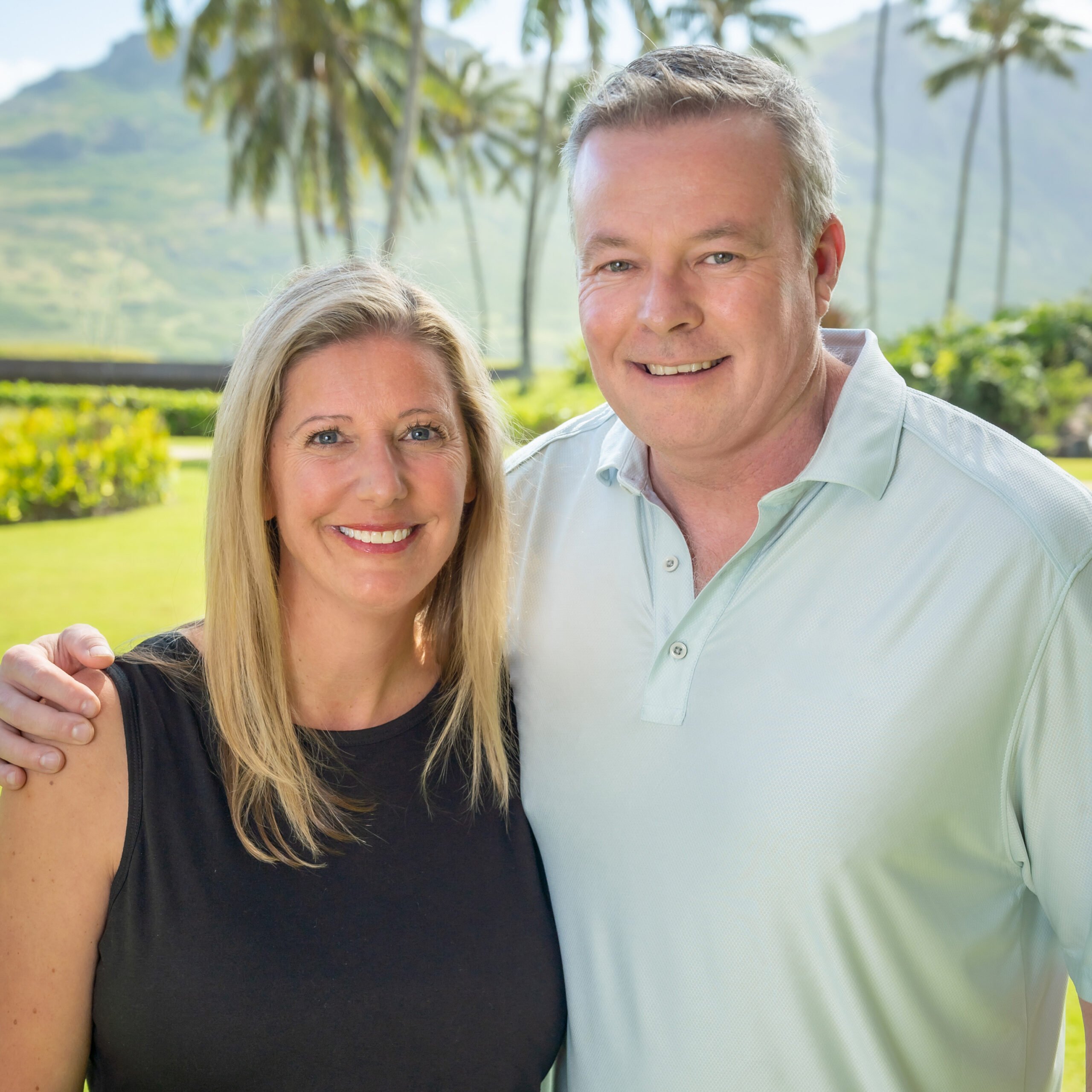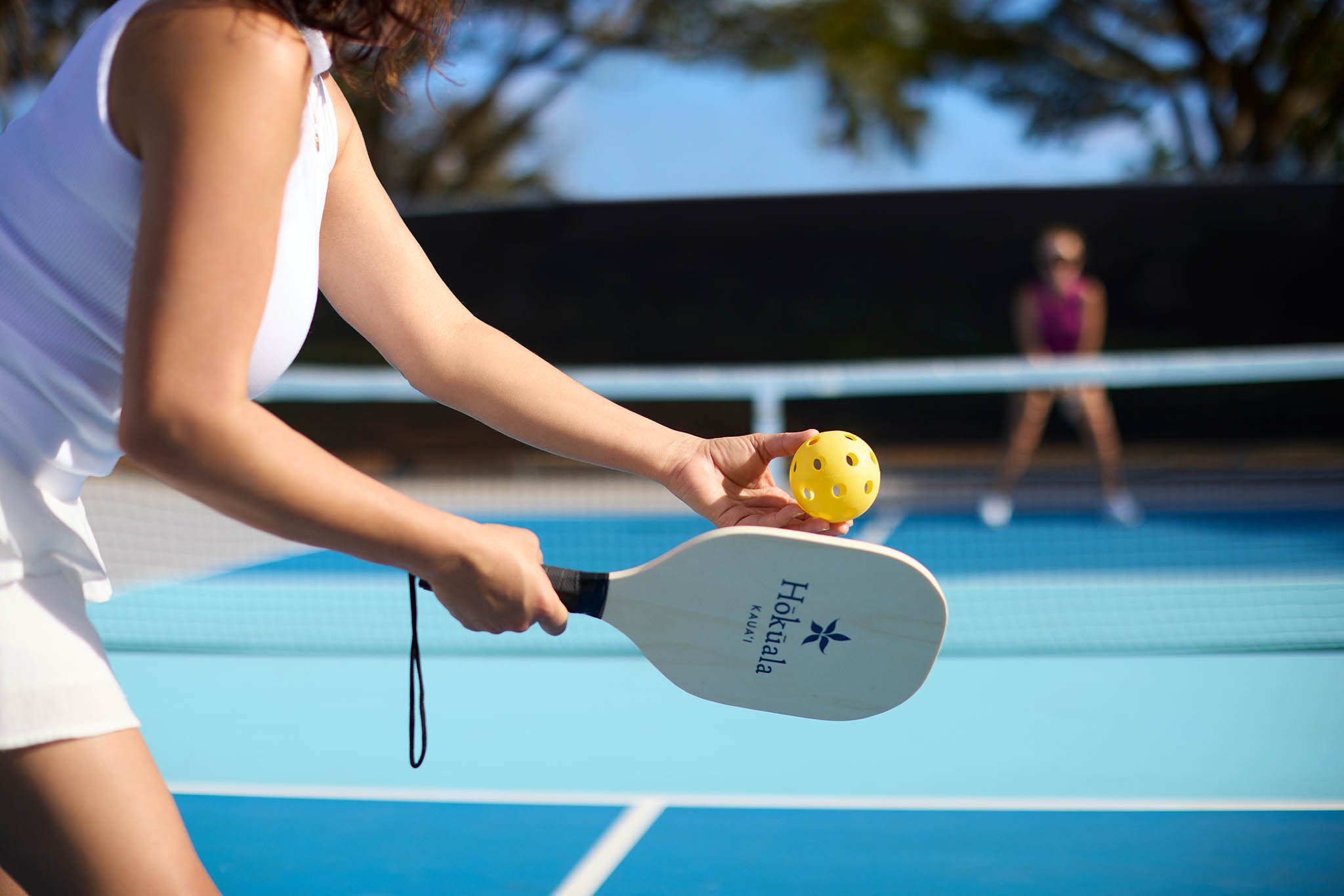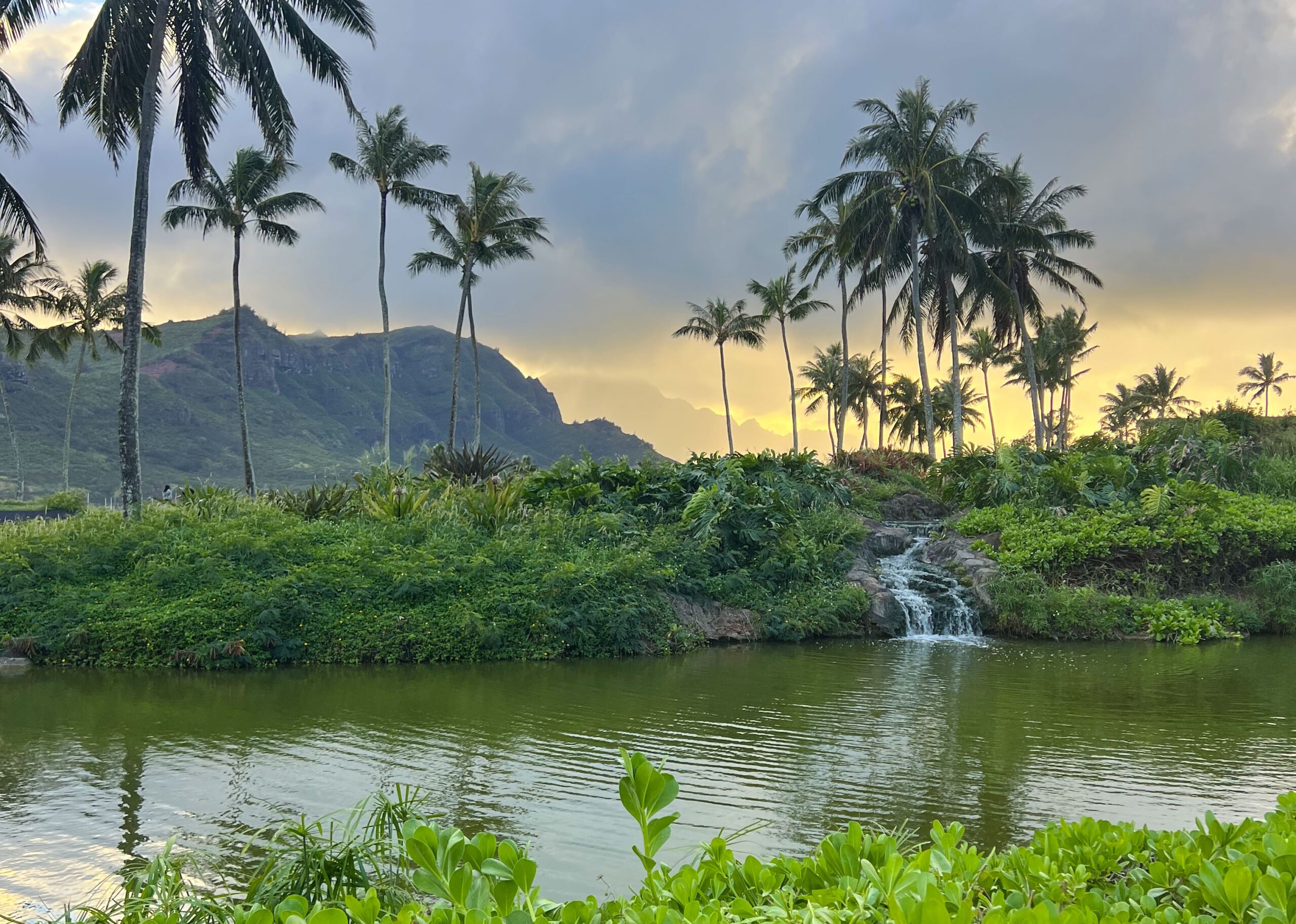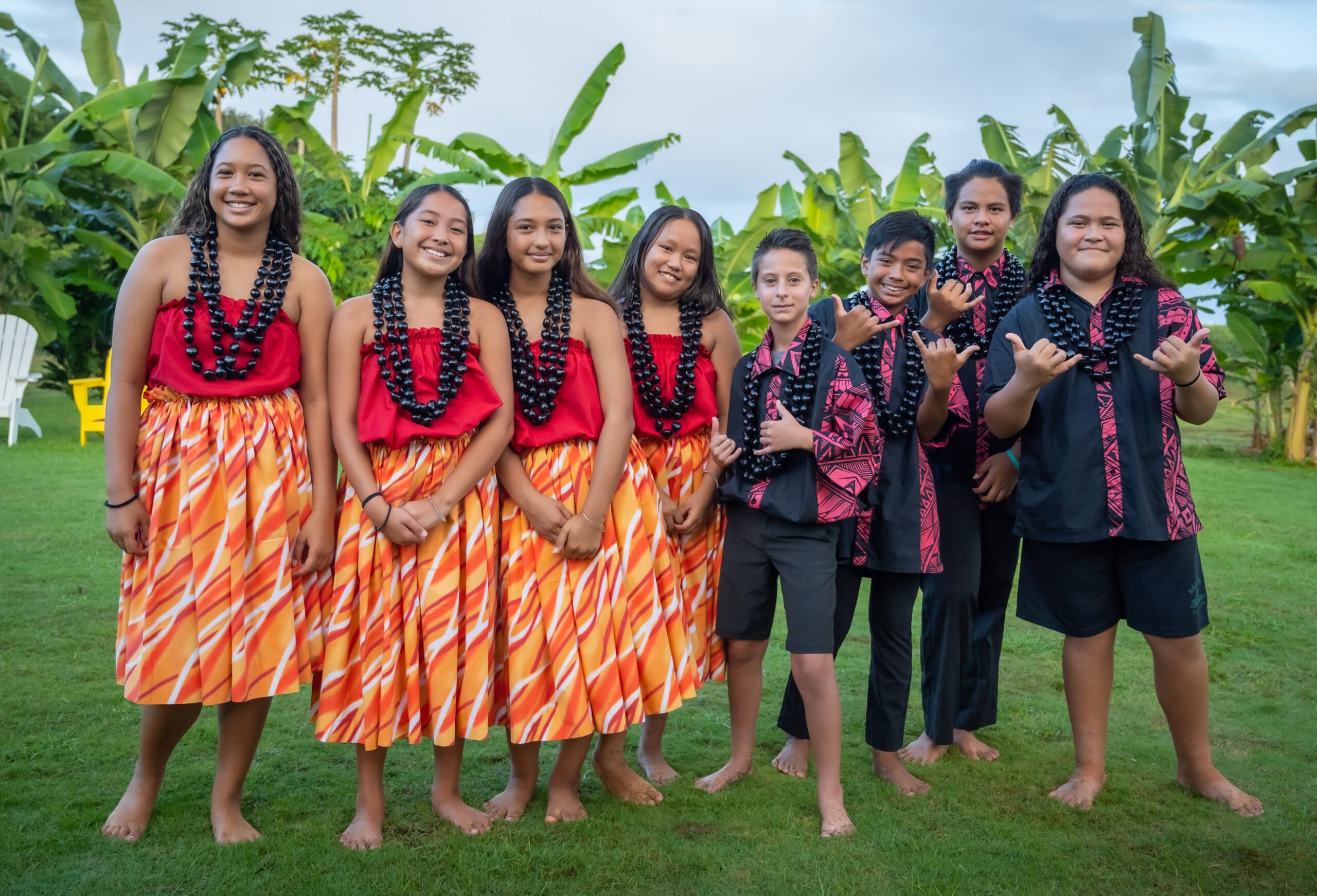Dream Green
April 25, 2019

For Eric Cucchi, Project Manager at Timbers Kauai, upholding the developer’s commitment and responsibility to preserving and respecting the fragile island environment is the best part of his job. “Having our own farm was up there in terms of being in line with our conservation efforts,” he says. Today, the Farm at Hokuala is abundant, producing fresh produce daily for the very fortunate chefs at Hualani’s. The farm is only one of several conservation initiatives adapted by Timbers Kauai. “These initiatives are not only important to us as developers but also to provide our guests with the best possible product,” Cucchi says. “Our conservation initiatives not only preserve and protect Kauai’s pristine environment, they also create the safest, cleanest, and most efficient energy systems for the property.”
Our conservation initiatives include the following programs and systems:
The Farm at Hokuala
Timbers Kauai and Famer Cody Lee Meyer converted an old overgrown golf course into a full-scale farm to produce food for the restaurant including a wide variety of produce, fresh herbs, a fruit orchard, and several “canoe crops” (the plants that were originally brought to Kauai by Polynesian settlers). Today, the farm offers education and outreach for owners, guests and local school programming. It’s also the site for our weekly Farm-to-Table dinners, a coveted event not only for our guests but for our chefs. “Our farm is unbelievable,” says Executive Chef Jafet Tellez. “We start every dish we create with all this amazing fresh produce we have. This island is so pristine, and our food reflects that.”

Heat Exchange System
Timbers Kauai uses a heat exchange system to cool and filter the air that is pushed into the residences and to heat the pool. This energy efficient ventilation system continuously supplies fresh clean air into the residences to keep guests healthy, remove indoor pollutants and odors, and to lower humidity. It also reduces the need for and cost of electricity, making it extremely energy efficient. It reduces condensation, which causes dampness, rot and mold in addition to wasting water, which is such a precious commodity on Kauai. “The heat exchange system kills two birds with one stone by both cooling the residences and heating the pool,” Cucchi says. “Better yet, it causes less condensation than a water tower and uses less potable water, and we have a much smaller demand on electricity and are using less energy, which is ultimately our goal.
Composting
Green waste is turned into compost on site and used as mulch and fertilizer throughout the property for landscaping as well as the farm. “Almost all the compost we use on this property is generated by this property,” Cucchi says. “Everything we can use gets put into green waste and turned into compost and turned into fertilizer. We use it for planting throughout the property.”
Protecting Endangered Species
Five endangered bird species thrive on the property including Nene, Hawaiian Stilt, Hawaiian Duck, Hawaiian Moorhen and Hawaiian Coot. A department dedicated to carrying out the requirements of the Hokuala Habitat Conservation Permit both monitors and protects the birds, as well as educating owners and guests about the endangered birds on property.

Rain Monitoring System, Drainage Swale, and Vetiver Grasses
There’s nothing worse than driving past a resort where the sprinklers are on all the time, especially on an island like Kauai that does get plenty of rain. Rain stations located throughout the property monitor rainfall to adjust the sprinkler system accordingly, automatically shutting it off when there is over a set amount of rain. “Using natural resources to protect the environment and conserve is always going to be the most ideal scenario,” Cucchi says. Using things like vetiver grass, a seagrass that has been planted in the lagoon and along its banks, help keep the water clean and bond the hillside. Trees have been cleared from the edges of two open storm drains that run through the property to allow UV light to break up the protozoa and bacteria. Vetiver has also been planted along the edges to help strengthen the slope and filter water going down into the swales.
Irrigation
In its simplest terms, the water used to irrigate a significant portion of the property comes from the property. A system of pumphouses draw water from the rain and well-fed lagoon. Better yet, the water from the lagoon is very nutrient rich thanks to the bids who live on its island and along its banks, making it ideal for landscaping use.

